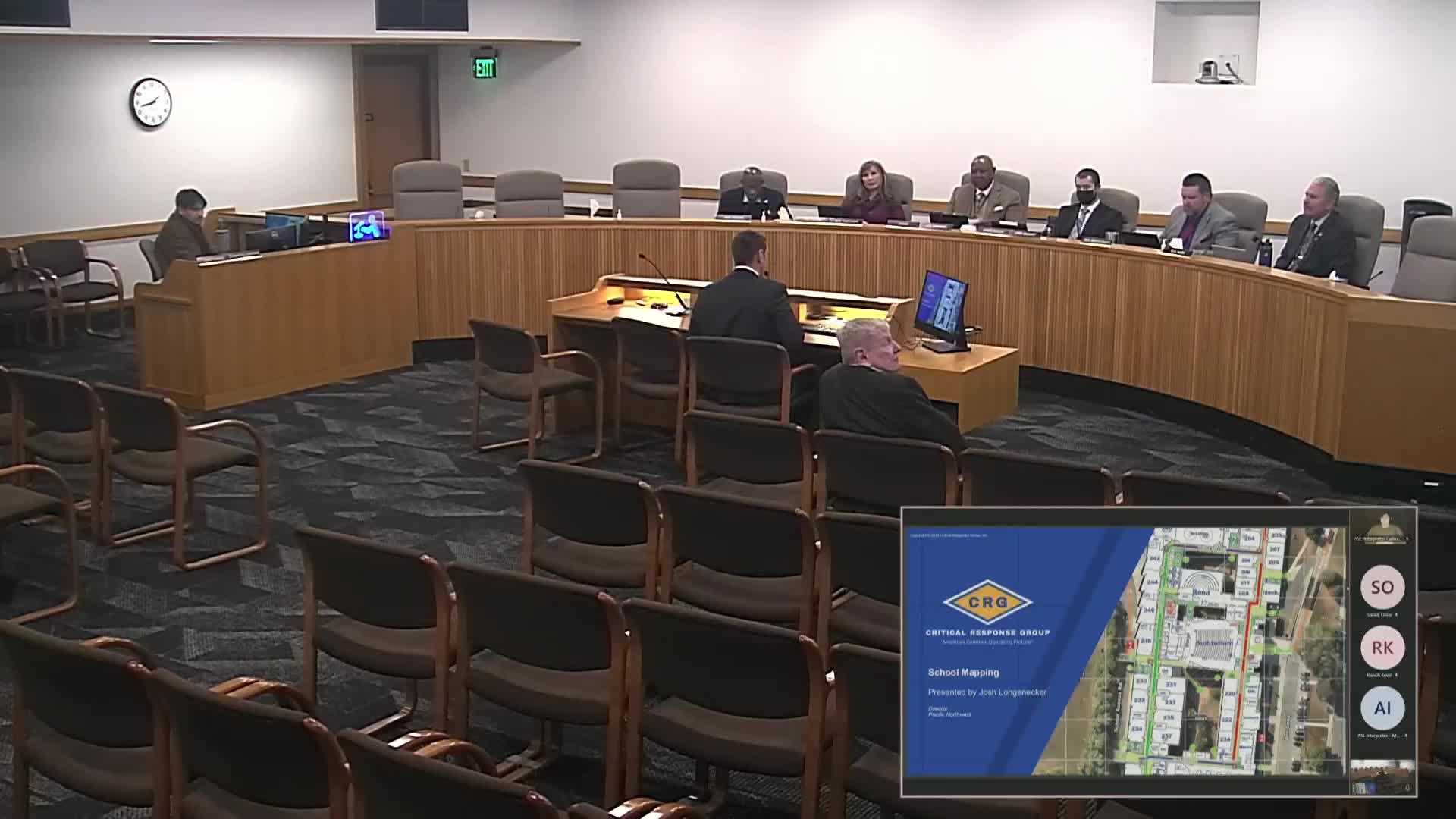Veteran-led initiative maps 20000 US schools to enhance emergency response strategies
January 23, 2025 | Veterans, Emergency Management, Federal and World Affairs, Senate, Committees, Legislative, Oregon
This article was created by AI summarizing key points discussed. AI makes mistakes, so for full details and context, please refer to the video of the full meeting. Please report any errors so we can fix them. Report an error »

The Senate Committee on Veterans, Emergency Management, Federal and World Affairs convened on January 23, 2025, to discuss critical safety measures for schools in Oregon. The meeting featured a presentation from the Critical Response Group, led by a regional director with extensive military experience in special operations rescue teams.
The director began by sharing his personal connection to the issue, recounting the tragic loss of his mother-in-law in a shooting incident in Clackamas Town Center, Portland, in 2012. This experience motivated him to leverage his tactical expertise to enhance public safety responses in schools and other large venues.
The presentation focused on the development of a "Collaborative Response Graphic" (CRG), a mapping tool designed to improve communication and navigation for first responders during emergencies. The director explained that traditional floor plans used by schools are often inaccurate and difficult for emergency personnel to access. In contrast, the CRG utilizes up-to-date aerial imagery and a standardized grid system to create clear, accurate maps that can be easily shared among various public safety agencies.
To date, the Critical Response Group has successfully mapped over 20,000 schools across the United States, achieving bipartisan support with thousands of affirmative votes in multiple states. The director emphasized the importance of having a common operating picture for all responding agencies, particularly in high-stress situations where quick decisions are crucial.
The committee members raised questions regarding the implementation of these maps, including how schools would report changes to their facilities and how first responders would access the mapping data during emergencies. The director assured them that the mapping data would be integrated into existing public safety software without any cost to the agencies, ensuring that all responders have access to the same information.
In conclusion, the meeting underscored the importance of accurate and accessible mapping tools in enhancing school safety and emergency response capabilities. The committee expressed interest in further collaboration with educational institutions to implement these vital resources effectively.
The director began by sharing his personal connection to the issue, recounting the tragic loss of his mother-in-law in a shooting incident in Clackamas Town Center, Portland, in 2012. This experience motivated him to leverage his tactical expertise to enhance public safety responses in schools and other large venues.
The presentation focused on the development of a "Collaborative Response Graphic" (CRG), a mapping tool designed to improve communication and navigation for first responders during emergencies. The director explained that traditional floor plans used by schools are often inaccurate and difficult for emergency personnel to access. In contrast, the CRG utilizes up-to-date aerial imagery and a standardized grid system to create clear, accurate maps that can be easily shared among various public safety agencies.
To date, the Critical Response Group has successfully mapped over 20,000 schools across the United States, achieving bipartisan support with thousands of affirmative votes in multiple states. The director emphasized the importance of having a common operating picture for all responding agencies, particularly in high-stress situations where quick decisions are crucial.
The committee members raised questions regarding the implementation of these maps, including how schools would report changes to their facilities and how first responders would access the mapping data during emergencies. The director assured them that the mapping data would be integrated into existing public safety software without any cost to the agencies, ensuring that all responders have access to the same information.
In conclusion, the meeting underscored the importance of accurate and accessible mapping tools in enhancing school safety and emergency response capabilities. The committee expressed interest in further collaboration with educational institutions to implement these vital resources effectively.
View full meeting
This article is based on a recent meeting—watch the full video and explore the complete transcript for deeper insights into the discussion.
View full meeting
